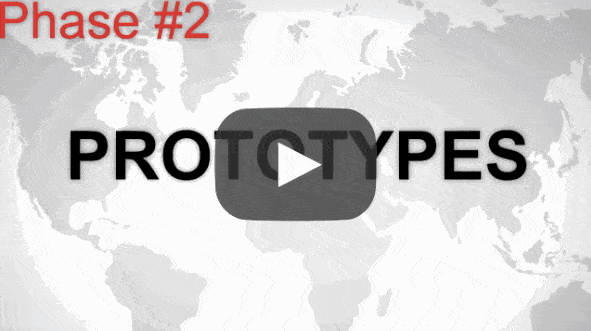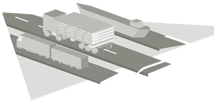
Thermoforming is a popular and effective strategy for any company that needs to produce plastic packaging or plastic component parts. Despite its popularity, though, there are still many manufacturers and industrial companies that don’t fully understand thermoforming’s benefits and exactly how it works. In this two-part blog series, we remove some of the mystery surrounding thermoform strategies.
In Part 1, we talked about the initial phases of any thermoform strategy: prototyping and tooling. Because thermoform packages and parts can be built to your custom specifications, it’s critical to get the planning stages right. Every thermoform supplier’s process may vary. At Deufol, we provide physical prototypes to ensure our output is consistent with your specifications and expectations. We then design and custom-build the tooling needed to meet your objectives.
Benefit #2:
You leverage our logistics and distribution resources.
Once the prototypes are approved and the tooling has been developed, it’s time to put the strategy into action. That’s the focus of Part 2 of this series — how you can use thermoforming to efficiently produce, package, and ship your thermoform plastic components.
Production
As discussed in Part 1, we custom design and build the tooling for our thermoform customers. That allows us to create a process that meets your precise specifications, objectives, and budget. The exact tooling used in each strategy depends on a number of factors. However, there are a few elements that are common in nearly every thermoform process.
One is the mold. This is simply the molded shape that we use to form your plastic packaging or component. The mold is build to your specifications and specifically for your product. We generally use 6061 aluminum for our molds because of its durability. It has a long shelf life and can be used repeatedly, helping you boost the ROI on your thermoform process.
Other commonly used components are the plug assists and cutting dies. The plug assists guide the plastic material into the mold and hold it in-place, helping it settle and form correctly in the mold cavity. The cutting dies are used to remove the finished plastic parts from the mold and to cut away any excess material.
We also commonly use upstackers. These are in-line fixtures that automatically stack the products on the line. That eliminates the need to remove product by hand. Upstackers save us time and save you money.
Again, while these components are used in almost all thermoform strategies, other elements can vary. For instance, some companies may utilize a fully-automated process to minimize labor costs and per-unit prices. Other companies may not have the volume or capital to justify an investment into full automation, so they opt for a manual process or a manual-automated hybrid.
(Courtesy: Ray Products Company Inc.)
Packaging
The next step in the thermoform process is to package your products. Much like the production phase, the packaging phase can be customized to meet your unique goals and needs.
Perhaps one of the most efficient packaging strategies is for us to manage your packaging and distribution directly from our facility. We can stock your parts, products, and other packaging pieces in our warehouse. Then, when the thermoform components are complete, we can package all necessary items and distribute from our facility.
There are several benefits to this kind of postponed packaging process. One is that you save space in your facility by storing your parts and products in our warehouse. Another is that our team handles packaging, so your team can focus on more important activities. Additionally, you leverage our logistics and distribution resources.
Shipping
Shipping may seem like a fairly straightforward process, but there are a few options and factors to consider. One is quality assurance during transit. At Deufol, we specialize in quality protection, so we package all parts and products in way that minimizes quality risk while in-transit.
 We also leverage technology to protect quality and optimize your process. Our photo documentation software creates images of your parts and packaging at every stop, so you can view the quality in real time. We also use barcode scanning technology to provide real-time status updates. Finally, GPS can be a useful tool for not only tracking location, but also temperature, vibration, and many other factors.
We also leverage technology to protect quality and optimize your process. Our photo documentation software creates images of your parts and packaging at every stop, so you can view the quality in real time. We also use barcode scanning technology to provide real-time status updates. Finally, GPS can be a useful tool for not only tracking location, but also temperature, vibration, and many other factors.
Ready to learn more about Deufol’s thermoforming solution and how it can work for your packaging needs? Let’s talk about it. Our thermoforming engineers welcome the opportunity to consult with you. ![]()






Let Us Know What You Thought about this Post.
Put your Comment Below.